Creating a Welcoming and Inclusive Salon Environment | A Guide to Fostering Belonging
Introduction: The New Standard of Salon Hospitality
A hair salon has always been more than just a place to get a haircut; it's a sanctuary, a space for transformation, and a hub of community. However, the traditional salon model is evolving. Today, the most successful and respected establishments understand that true hospitality extends beyond a friendly greeting and a complimentary beverage. The new standard is centered on creating a genuinely welcoming and inclusive salon environment where every single person who walks through the door feels seen, respected, and safe. This commitment is not a trend but a fundamental shift in the beauty industry, recognizing that self-care and self-expression should be accessible and affirming for everyone, regardless of their gender identity, race, hair type, age, ability, or background.
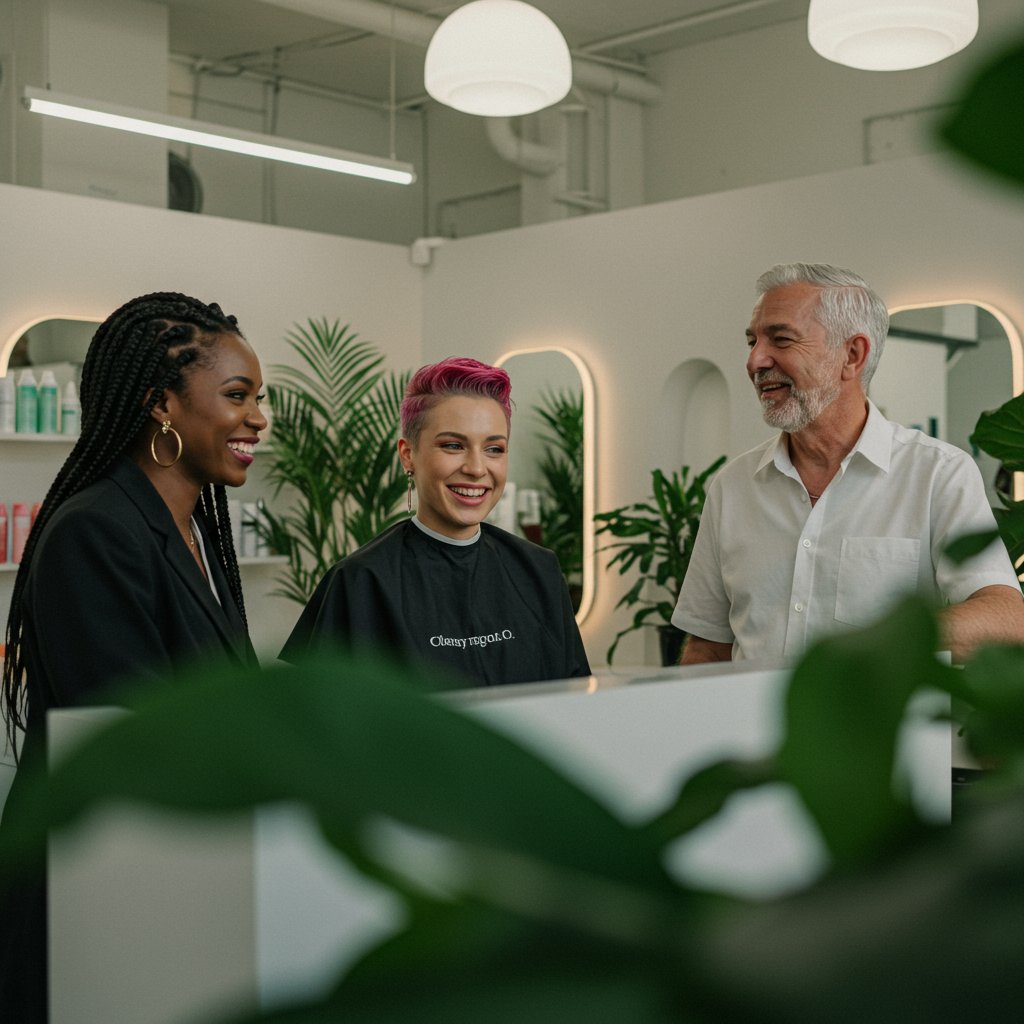
Building an inclusive space is an active, ongoing process that requires intention, education, and empathy from the entire salon team. It involves re-evaluating everything from the language used during consultations to the pricing structure on the service menu. For clients, finding a salon that prioritizes inclusivity means they can relax and trust that their unique needs will be met with professionalism and care. For stylists and salon owners, fostering this atmosphere not only broadens their clientele but also enriches their craft and creates a more positive, dynamic workplace. This guide will explore the key pillars of creating a truly welcoming and inclusive salon environment, offering actionable insights for both industry professionals and discerning clients.
Beyond the Welcome Mat: The Foundations of True Inclusivity
Creating a welcoming and inclusive salon environment begins long before a client sits in the chair. It starts with a foundational commitment to understanding the core principles of diversity, equity, and inclusion (DEI). It's crucial to recognize that diversity—having a mix of people from different backgrounds—is only the first step. Inclusion is the act of creating an environment where every one of those individuals feels valued, respected, and supported. This requires a conscious effort to dismantle old habits and industry norms that may have inadvertently excluded certain groups.
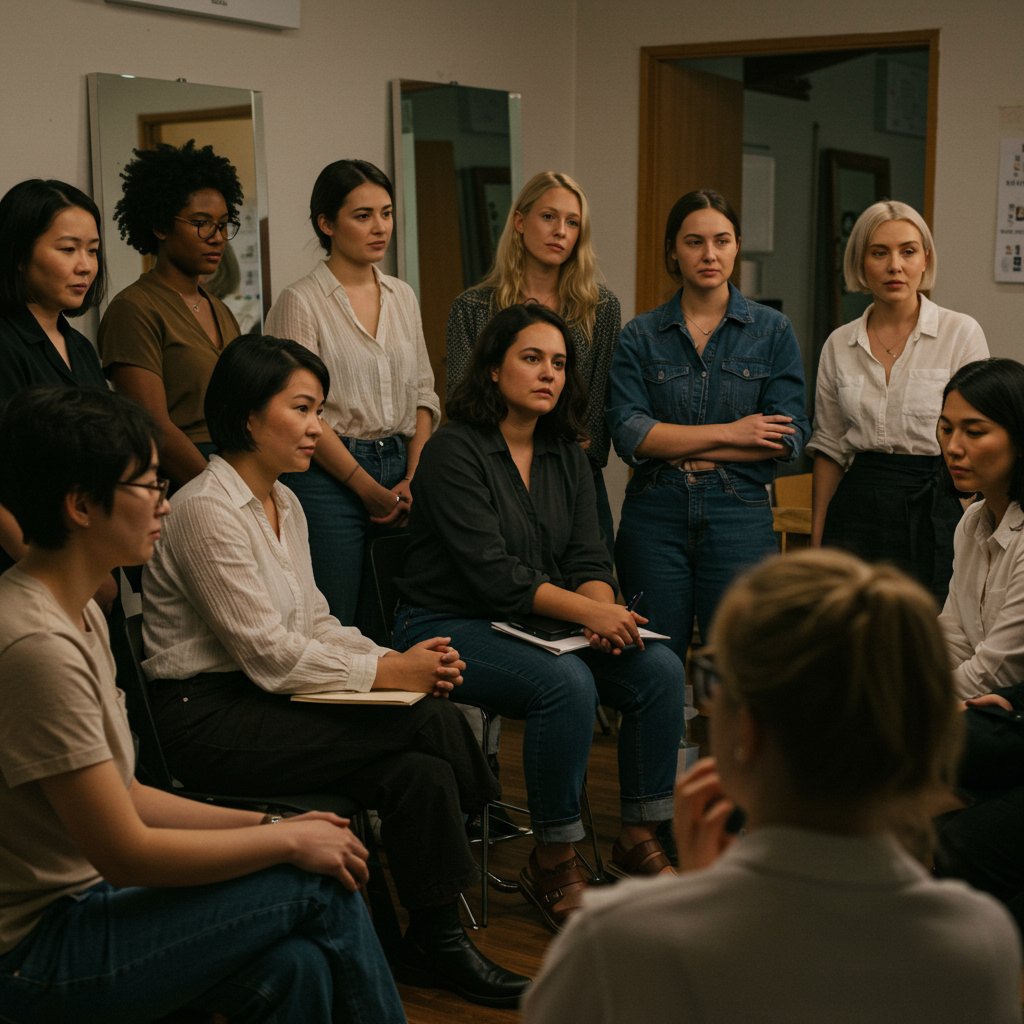
This foundational work involves a mindset shift for the entire team, led by salon management. It means moving from a passive 'all are welcome' stance to an active 'we have intentionally created this space for you' approach. This includes investing in comprehensive team training that goes beyond technical skills to cover topics like unconscious bias, cultural competency, and LGBTQIA+ allyship. When a team shares a common language and understanding of inclusivity, it translates into a seamless and authentic client experience. This commitment to education ensures that every team member, from the front desk coordinator to the master stylist, is equipped to contribute to a genuinely safe and affirming atmosphere.
Leadership plays a pivotal role in embedding these values into the salon's DNA. When salon owners and managers model inclusive behavior, prioritize DEI initiatives, and create clear policies that protect both clients and staff, it sets a powerful precedent. This might involve developing a clear mission statement centered on inclusivity, implementing a zero-tolerance policy for discrimination, and regularly seeking feedback from both staff and clients on how the environment can be improved. True inclusivity is not a checkbox to be ticked; it is a continuous journey of learning, adapting, and growing to better serve the diverse community a salon is part of.
Inclusive Language and Communication: Words Matter
Language is one of the most powerful tools for building a welcoming and inclusive salon environment. The words used during booking, consultations, and the service itself can either make a client feel comfortable and respected or alienated and misunderstood. A primary component of inclusive communication is the conscious use of gender-neutral language. Instead of greeting a group with “Hello, ladies,” a simple “Hello, everyone” or “Welcome in” is far more inclusive. Similarly, using terms like “partner” or “spouse” instead of “husband” or “wife” avoids making assumptions about a client's relationships.
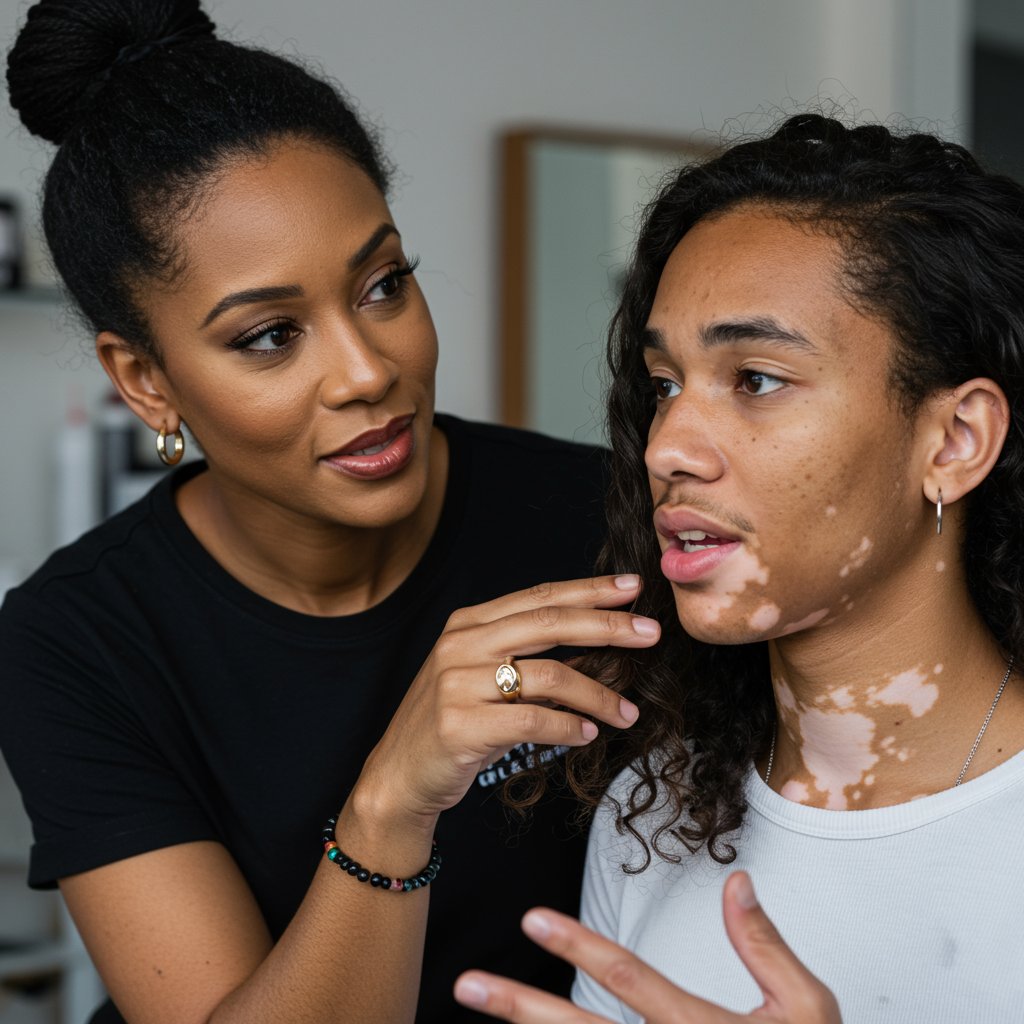
One of the most critical aspects of respectful communication is the correct use of pronouns. Making it a standard practice to introduce oneself with pronouns (e.g., “Hi, my name is Alex, and I use they/them pronouns”) normalizes the conversation and invites clients to share their own without feeling singled out. Intake forms can also be updated to include a field for pronouns. If a mistake is made, a quick, sincere apology followed by immediate correction is the best course of action (e.g., “I’m so sorry, she said…” should be corrected to “I mean, they said…”). This small act demonstrates respect and a commitment to getting it right.
Beyond pronouns, the consultation is a key moment for inclusive communication. Active listening is paramount. Stylists should ask open-ended questions that focus on the client's hair goals and identity, rather than projecting societal beauty standards. Questions like, “What is your goal for your hair today?” or “How do you want to feel when you look at your hair?” are more empowering than “Are you sure you want to cut it that short?” This approach empowers clients to express their authentic selves and builds a foundation of trust. It communicates that the stylist is a partner in achieving the client's vision, respecting their autonomy and individuality above all else.
Designing a Safe and Accessible Physical Space
The physical environment of a salon speaks volumes about its values. An intentionally designed space can significantly contribute to a welcoming and inclusive salon environment by considering the diverse needs of all clients. Physical accessibility is a non-negotiable starting point. This means ensuring the entrance is wheelchair accessible with a ramp or level flooring, pathways are wide enough to navigate comfortably, and at least one styling station and shampoo bowl are adjustable or designed for clients with mobility challenges. Restrooms should also be accessible and designated as all-gender to provide a safe and comfortable option for everyone.
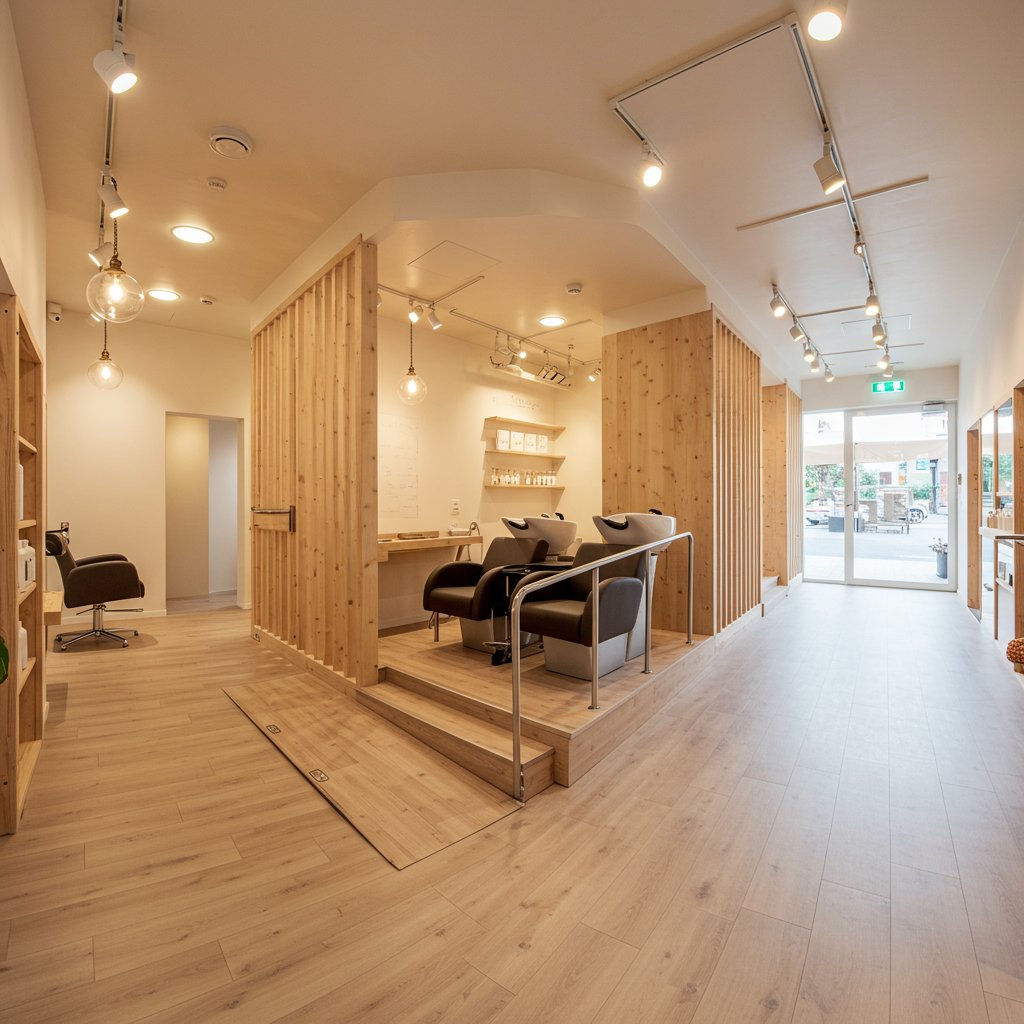
Inclusivity also extends to sensory considerations. A traditional salon can be a source of sensory overload with loud music, strong chemical smells, and bright, overwhelming lights. Offering sensory-friendly options can make a world of difference. This could include designated quiet hours with lower music volume and reduced chatter, or the option to book a “silent appointment” where conversation is kept to a minimum. Using low-fragrance or fragrance-free products and ensuring proper ventilation can also create a more comfortable experience for clients with chemical sensitivities or aversions to strong smells. Adjustable lighting can also help accommodate clients who are sensitive to brightness.
Finally, the visual elements and decor of the salon should reflect the diversity it aims to serve. The art on the walls, the magazines on the coffee table, and the portfolio of work displayed should feature people of various races, ages, body types, gender expressions, and abilities. When potential clients see themselves represented in the space, it sends a powerful message that they belong there. This conscious curation of the environment shows that inclusivity is not just a policy but a lived and celebrated value, making the space feel like a true community hub for everyone.
Expertise Across All Hair Types and Textures
True inclusivity in a hair salon is impossible without technical expertise across the full spectrum of hair types and textures. For too long, the beauty industry has centered education and services around straight, finer hair textures, leaving clients with curly, coily, and highly textured hair underserved. A genuinely welcoming and inclusive salon environment requires a firm commitment to dismantling this hierarchy. This begins with investing in advanced and ongoing education for all stylists to ensure they are confident and competent in caring for every hair type that comes through the door.
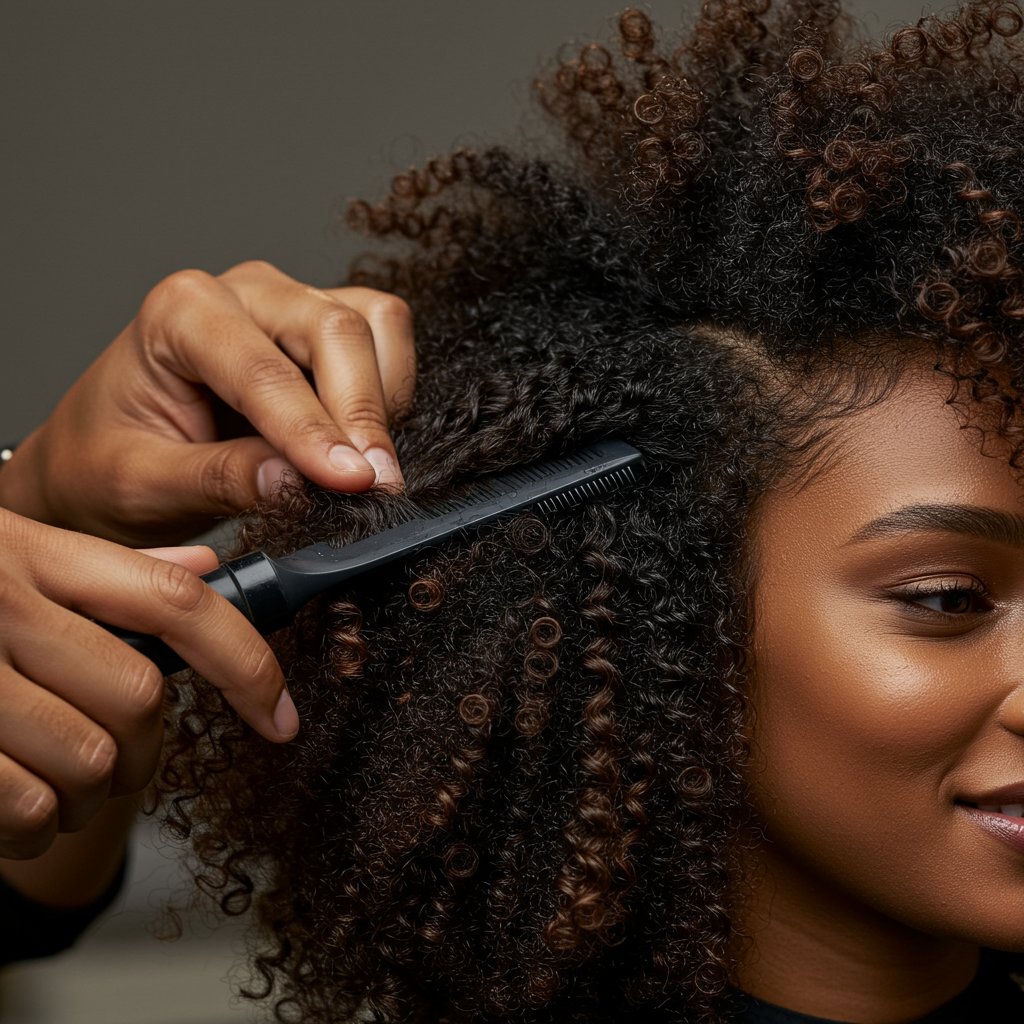
This commitment means stylists learn not just how to cut or color, but how to properly cleanse, condition, detangle, and style textured hair while promoting its health. It involves understanding porosity, curl patterns from 2A to 4C, and the specific needs of different hair fabrics. Furthermore, an inclusive salon will move away from outdated and discriminatory pricing models that charge an extra “texture tax” for clients with thicker or curlier hair. Pricing should be based on factors like time, length, and the complexity of the service, not on the client’s hair type, which is an inherent part of their identity.
Beyond stylist education, the salon's backbar and retail shelves must reflect this commitment. Stocking a diverse range of professional product lines designed for various hair needs is essential. This ensures that every client’s hair is treated with products formulated to enhance its unique beauty and health. When a client with coily hair sees that the salon is equipped with the right tools and products for their service, it builds immediate trust and signals that they are not an afterthought but a valued and anticipated guest. This dedication to technical excellence is a cornerstone of authentic inclusivity.
Gender-Affirming Services and Pricing Structures
A critical step toward creating a welcoming and inclusive salon environment is dismantling the gender binary in services and pricing. The traditional model of pricing haircuts based on “men’s” and “women’s” categories is outdated, exclusionary, and reinforces harmful stereotypes. It fails to account for non-binary individuals, trans men and women, and people of all genders who opt for haircuts that don't align with traditional expectations. The modern, inclusive solution is a gender-neutral pricing structure.
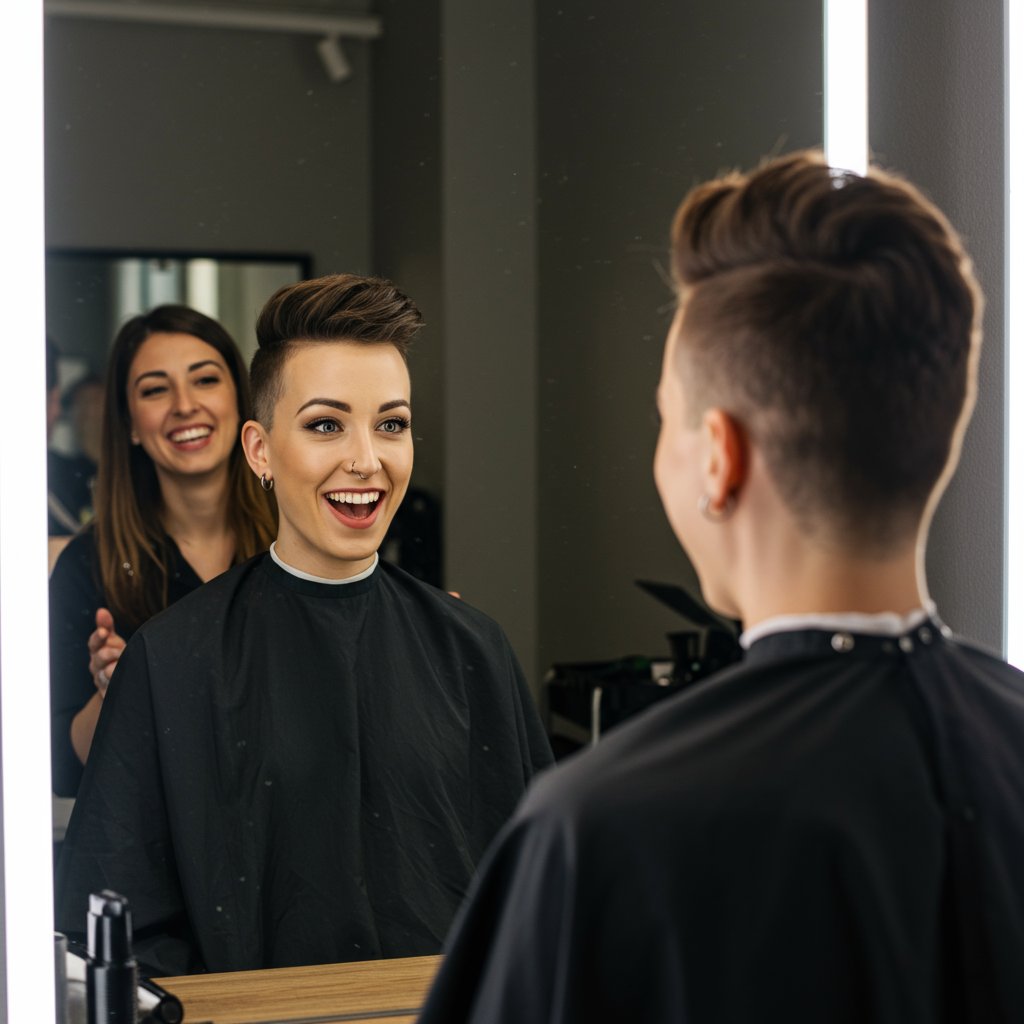
Gender-neutral pricing, sometimes called service-based or time-based pricing, determines the cost based on objective factors: the length of the hair, the time required for the service, and the technical complexity involved. A short, detailed clipper cut costs the same whether the client is a man, a woman, or non-binary. A long, layered haircut with a blowout requires more time and product, and its price reflects that, regardless of the client’s gender. This transparent and equitable model ensures that clients are paying for the stylist’s time and skill, not for a gendered assumption. Implementing this structure is a clear and powerful statement that the salon respects and welcomes people of all gender identities.
Creating a safe space for transgender and non-binary clients goes beyond just pricing. It requires education and empathy from the entire staff. Stylists should be trained in providing gender-affirming haircuts, which can be a deeply significant and emotional experience for a client exploring or confirming their identity. This involves listening carefully to their goals, understanding the role hair plays in their gender expression, and offering supportive, judgment-free expertise. Using correct pronouns, ensuring privacy during consultations if requested, and celebrating the client’s journey are all vital parts of providing a service that is not just technically excellent but emotionally affirming as well.
Cultivating a Diverse and Educated Team
The internal culture of a salon is just as important as the external client experience. A truly welcoming and inclusive salon environment is built from the inside out, starting with the team itself. Hiring practices should actively seek to build a diverse team of stylists who bring a variety of backgrounds, experiences, and skills to the salon. A diverse staff not only better reflects the community the salon serves but also fosters a richer, more creative, and more empathetic workplace culture. When clients see stylists who look like them, it can instantly create a sense of comfort and belonging.
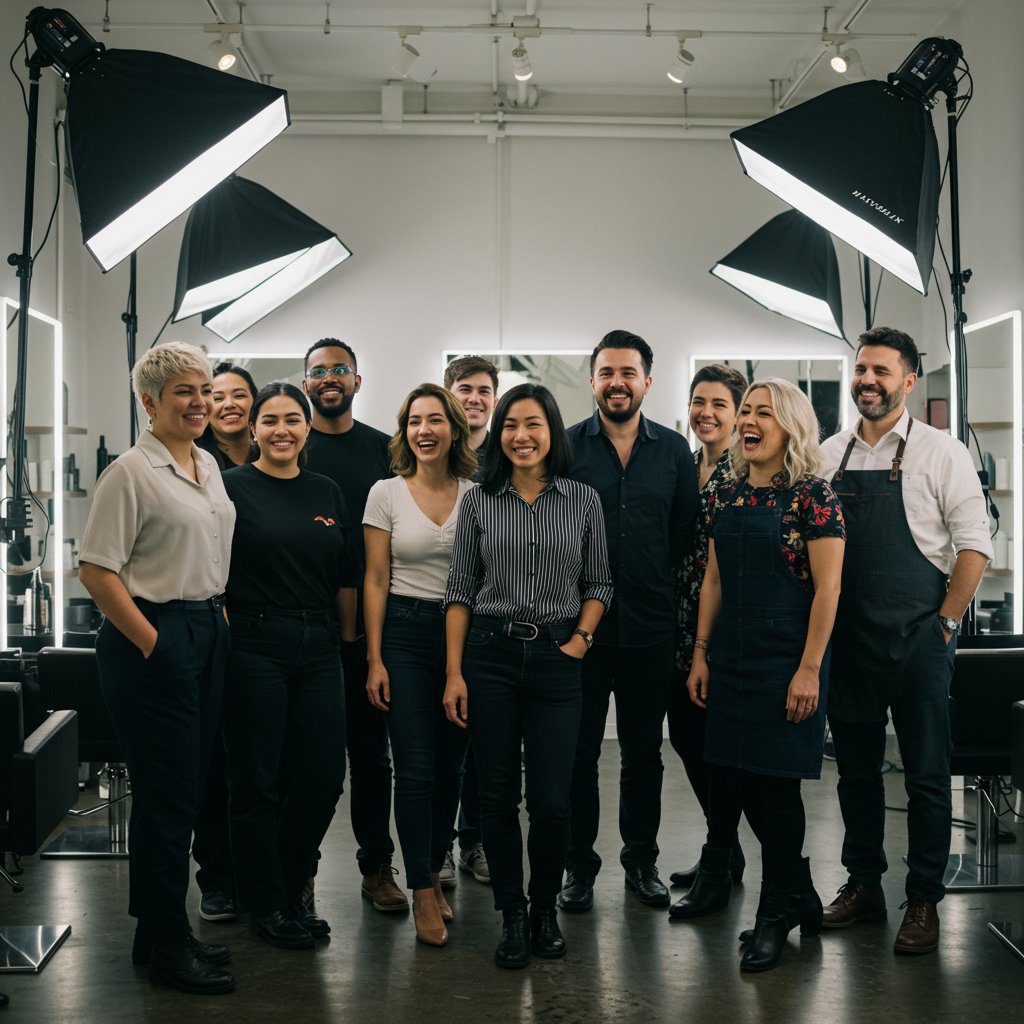
However, diversity without inclusion is not enough. Salon leadership must invest in ongoing diversity, equity, and inclusion (DEI) training for the entire team. This should not be a one-time seminar but a continuous part of professional development. Effective training can cover a range of topics, including understanding unconscious bias, practicing active allyship, learning culturally competent communication, and staying updated on inclusive language and terminology. This education empowers staff to navigate diverse client interactions with confidence, sensitivity, and respect, ensuring a consistent and genuinely inclusive experience for everyone.
Fostering an inclusive team culture means creating a workplace where every staff member feels respected, valued, and has a voice. This involves establishing clear communication channels for feedback, addressing any instances of non-inclusive behavior swiftly and effectively, and celebrating the unique contributions of each team member. When stylists feel psychologically safe and supported at work, they are better equipped to extend that same sense of safety and support to their clients. This positive internal environment radiates outward, becoming the very foundation of the salon’s welcoming atmosphere.
Marketing and Online Presence: Reflecting Your Values
A salon’s marketing and digital footprint are often the first points of contact for a potential client, and they must accurately reflect the business's commitment to inclusivity. To build a welcoming and inclusive salon environment, this ethos must be visible in every aspect of its public-facing identity. The most impactful way to do this is by showcasing real, diverse clients in marketing materials. A salon’s website, social media feeds, and promotional content should feature a wide array of people, including different races, ethnicities, ages, body sizes, gender expressions, and abilities. Equally important is to showcase stylist expertise on all hair types and textures, from pin-straight to 4C coils.
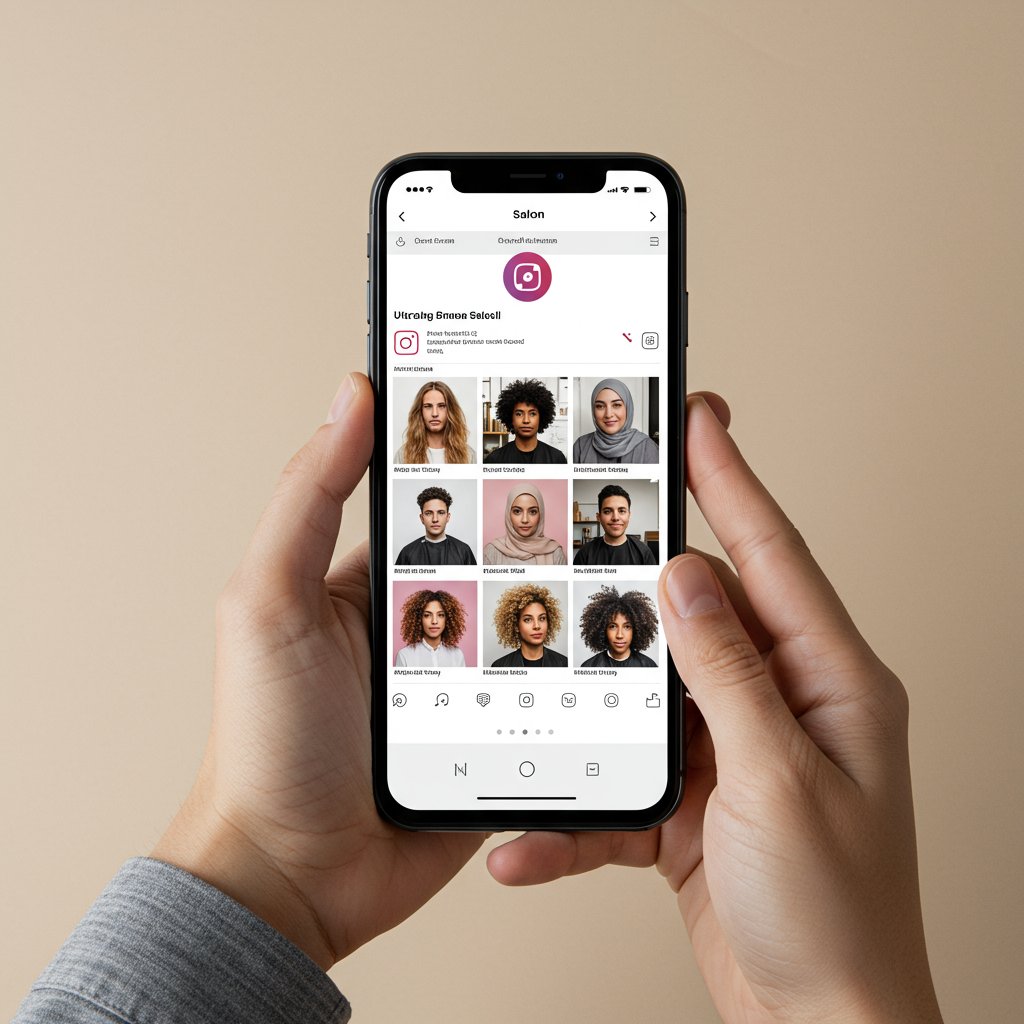
Language used online is just as crucial as in-person communication. The salon's website copy, social media captions, and service descriptions should use inclusive, gender-neutral language. It's an opportunity to be explicit about the salon's values. A clear statement of inclusivity or a DEI mission statement on the website's 'About' page can be a powerful signal to potential clients seeking a safe space. The online booking system should also be updated to reflect these values, incorporating fields for pronouns and using gender-neutral service menus. This transparency builds trust before a client even books an appointment.
Authenticity is key. Inclusive marketing is not about tokenism or performative allyship; it's about genuinely celebrating the diverse community the salon serves. It involves sharing client stories (with their permission), highlighting the continuing education of the team, and being transparent about policies like gender-neutral pricing. Engaging with community organizations that support marginalized groups and sharing educational content related to inclusivity can further solidify the salon's commitment. When a salon's online presence is a true reflection of its inclusive in-person environment, it attracts a clientele that values and seeks out those principles.
Quick Tips for a More Inclusive Salon Visit
- Update Intake Forms: Include fields for name, pronouns, and any sensory or accessibility needs.
- Offer Silent Appointments: Provide an option for clients who prefer a quiet experience for mental health or sensory reasons.
- Curate Your Playlist: Ensure music is varied and played at a comfortable volume. Consider having a 'quiet zone' in the salon.
- Diversify Reading Material: Replace traditional gossip magazines with a range of publications covering diverse interests, cultures, and lifestyles.
- Use Visual Cues: Display subtle signs like a pride flag sticker or a 'You Are Safe Here' decal to signal an affirming space.
- Ask, Don't Assume: This applies to everything from pronouns to how a client wants their hair washed or styled.
- Prioritize Comfort: Regularly check in with the client about their comfort level, from the water temperature at the shampoo bowl to the pressure of the scalp massage.
Frequently Asked Questions (FAQ)
What is gender-neutral pricing in a salon?
Gender-neutral pricing is a modern and equitable pricing structure where the cost of a service is based on the time, skill, and product required, rather than the client's gender. Instead of having separate prices for 'men's cuts' and 'women's cuts,' services are priced based on hair length (e.g., short, medium, long) and complexity. This approach is more inclusive of transgender and non-binary clients and fairly charges all clients for the work being performed.How can I find a genuinely inclusive salon near me?
Start by searching online for terms like 'inclusive salon,' 'gender-neutral salon,' or 'LGBTQ friendly salon' in your area. Scrutinize their websites and social media profiles. Look for explicit statements about their values, diverse representation in their photos, gender-neutral service menus, and positive reviews from a wide range of clients. You can also look for salons that are part of networks like the Dresscode Project or Strands for Trans.What should I do if a stylist or salon staff member misgenders me?
If you feel safe and comfortable doing so, you can correct them in the moment. A simple, firm correction like, “My pronouns are they/them, please use those,” is appropriate. If you don't feel comfortable correcting them directly or if the behavior persists, it is best to speak with salon management. A truly inclusive salon will have a protocol for this, take your feedback seriously, and use it as a learning opportunity for their staff.Why is it so important for stylists to be trained on all hair types?
The beauty industry has historically centered Eurocentric standards, leading to a lack of education and confidence among many stylists in working with curly and coily hair. This is exclusionary and perpetuates harmful beauty standards. It's crucial for stylists to be trained on all hair types to provide equitable, high-quality service to every client. This ensures clients with textured hair don't have to search for a 'specialty' salon and can feel confident walking into any professional establishment.What are 'silent appointments' and why are they an inclusive practice?
A silent appointment is an option for clients who prefer not to engage in conversation during their service. Clients may request this for various reasons, including anxiety, sensory sensitivities, mental exhaustion, or simply a desire to relax quietly. Offering this service acknowledges that different people have different social and sensory needs, making the salon experience more accessible and comfortable for a wider range of individuals. It's a simple yet powerful way to show respect for a client's well-being.How does a salon's decor contribute to making it feel inclusive?
A salon's decor is a form of non-verbal communication. When artwork, photography, and magazines exclusively feature a narrow range of people (e.g., young, thin, white, cisgender women), it can send an unintentional message about who is and isn't welcome. By contrast, a salon that displays art and imagery featuring people of diverse races, ages, body types, and gender expressions signals that it celebrates everyone. This visual representation helps create an environment where all clients can see themselves and feel a sense of belonging.Conclusion: The Ongoing Journey of Inclusivity
Creating a welcoming and inclusive salon environment is not a final destination but a continuous and evolving journey. It requires a deep commitment to empathy, education, and action from every level of a salon's operation. From the language of the consultation and the design of the physical space to the equity of the pricing menu and the diversity of the team, every detail matters in building a true sanctuary for self-expression.
For clients, supporting salons that champion these values means investing in businesses that are actively making the beauty industry a better, more equitable place. For salon professionals, embracing inclusivity is not just good for business—it is the right thing to do. It enriches the craft, fosters a more positive and creative work environment, and ensures that the transformative power of a great salon experience is accessible to all. By working together, stylists and clients can continue to raise the standard, ensuring every salon chair is a safe and affirming space for everyone.


